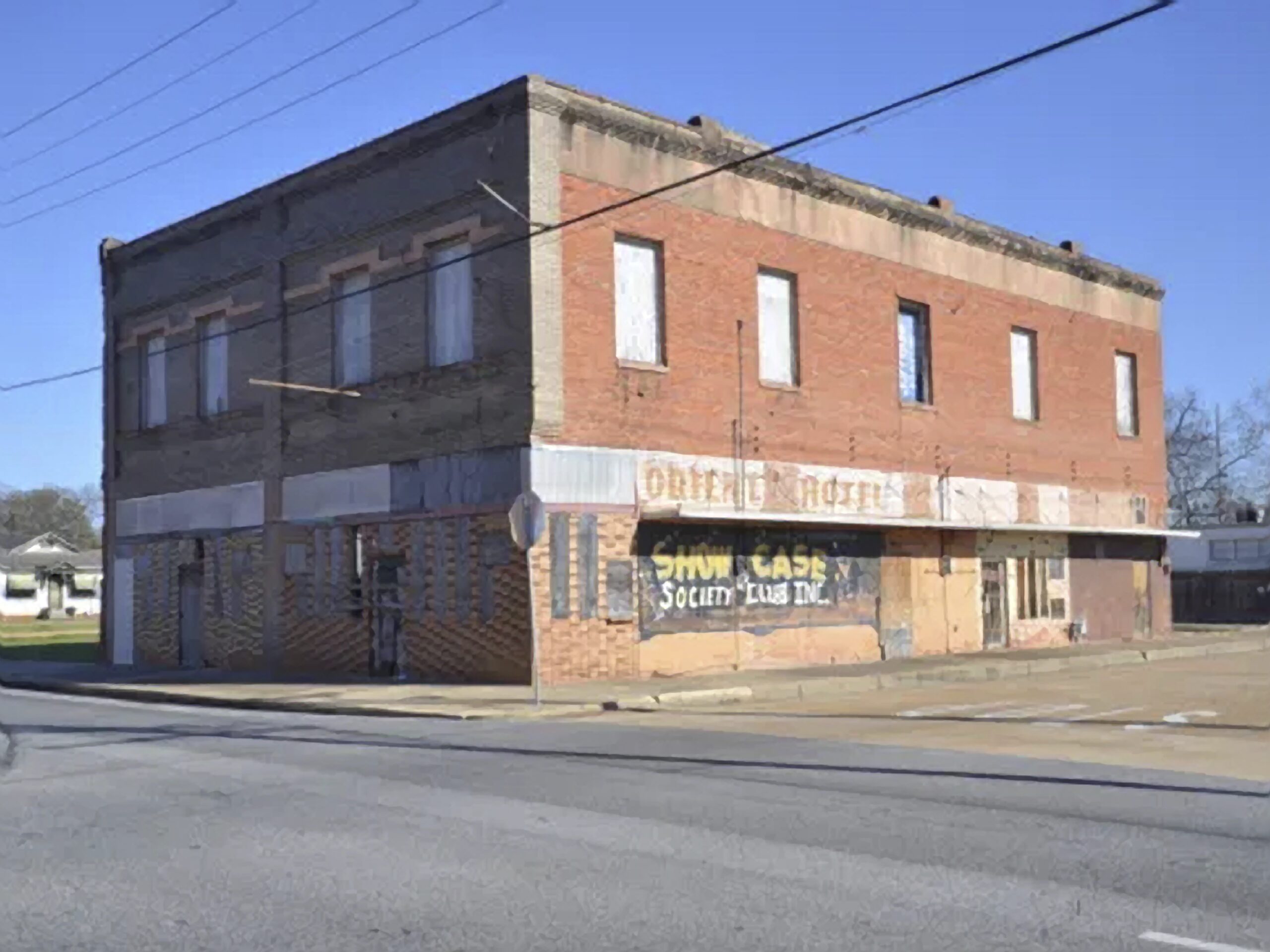






Al Kapone had arranged for me to get access to the South By Southwest Music Festival in Austin, where he was performing this year, so I headed out early in the morning down I-55 across Mississippi. At Madison, I stopped for coffee, but since Jazz & Java had closed in December, I had to settle for Starbucks, and then I started down the Natchez Trace into Natchez. Although the city had seen better days, there were still a lot of old, historic buildings downtown, many with the upstairs balconies that people often associate with New Orleans. On Franklin Street, I found the Natchez Coffee Company, which was filled with a mix of tourists and local people enjoying sandwiches and coffees. I ordered a latte, and then noticed a bookstore across the street, but I felt that if I went in there, I would lose at least an hour of time, so I went back to my car and drove back out to the bypass, across the Mississippi River, and into Vidalia, Louisiana. The drive from Ferriday to Alexandria was hot and boring, and it was 5 PM when I finally got to Pineville.
I didn’t want to stop in Alexandria, but I did want to drive down Lee Street, since, judging from old city directories, it had been the center of Alexandria’s Black night life. As recently as 1984, there had been a couple of record stores on the street, but as I drove down it in the early evening, there was very little left. Urban renewal had taken its toll in Alexandria just as it had everywhere else, but there were some clues to the past along Lee Street. I noticed a building with signs indicating that it had been a hotel, a nearby tire shop, a couple of night clubs that looked as if they might still be open, a few older Black men gathered out in front of the buildings. Still, Lee Street was now more vacant lots than buildings, and I wondered if anything was being done to preserve the historic buildings that remain.
Heading south on I-49, I exited onto a state road that led to the town of Eunice, where the first thing I noticed was two young Black kids on horseback riding south toward the downtown. There had been a couple of record stores in Eunice, but one of them was closed for good, and another was closed for the evening. Across the street from it was yet another coffee bar, where I ordered another latte, while watching the same young kids I had seen earlier as they rode their horse down the main street of town. Highway 190 was good road to the west, and the sun stayed with me until I crossed into Texas.
The Holiday Inn in Beaumont where I had booked my room was across the street from a Pappadeaux’s, but I had decided I wanted steak instead, so after checking in, I drove down to Crockett Street, Beaumont’s entertainment district, where I ate dinner at a steakhouse called Spindletop. They were having a pre-South By Southwest party at the rock club next door, but I decided to drive down the streets that had been entertainment centers for Beaumont’s Black community back in the 1960’s. Urban renewal had devastated Black communities everywhere, but in Beaumont, there had also been hurricanes, so streets like Gladys and Forsythe were almost completely vacant. I had hoped to catch of glimpse of what life must have been like in those streets’ hayday, but I could see nothing.
Disappointed, I drove the expressway southward into Port Arthur, thinking I might find some kind of live music going on along Gulfway Drive. But Port Arthur proved to be an eerie, ghostly city almost entirely abandoned. It had seemed troubled but still alive back when Al Kapone had been booked to perform there back in the 1990’s, but now there seemed to be nothing left. As I drove down the main street downtown, I came upon the abandoned Sabine Hotel first, and then street after street of abandoned business buildings. Boarded up department stores, boarded up furniture stores, an abandoned World Trade Center, an abandoned federal courthouse. The apocalyptic landscape was made all the more strange by the brilliant streetlights with bathed everything in this area (the residential areas were pitch-black, with few streetlights at all), as well as the strange mist and fog that hung over the city.
I drove back along the Twin City Highway, now thoroughly depressed, wondering how a whole city of 70,000 people could be so thoroughly abandoned. Catching Washington Boulevard, I drove across the Peach Orchard neighborhood, noticing a new Screwed Up Records store that hadn’t been there the last time I was in Beaumont, and The Unit store, which sold mostly clothing but a few compact discs. Realizing that I wasn’t going to find any live jazz, blues or soul, I decided to retire to the hotel and to bed. (March 17, 2009)

